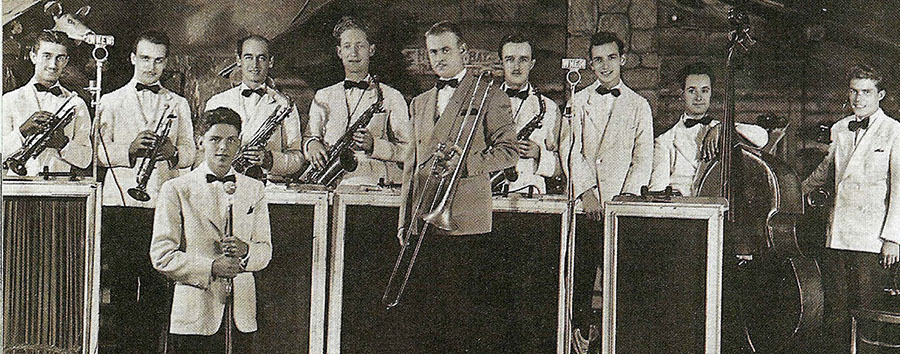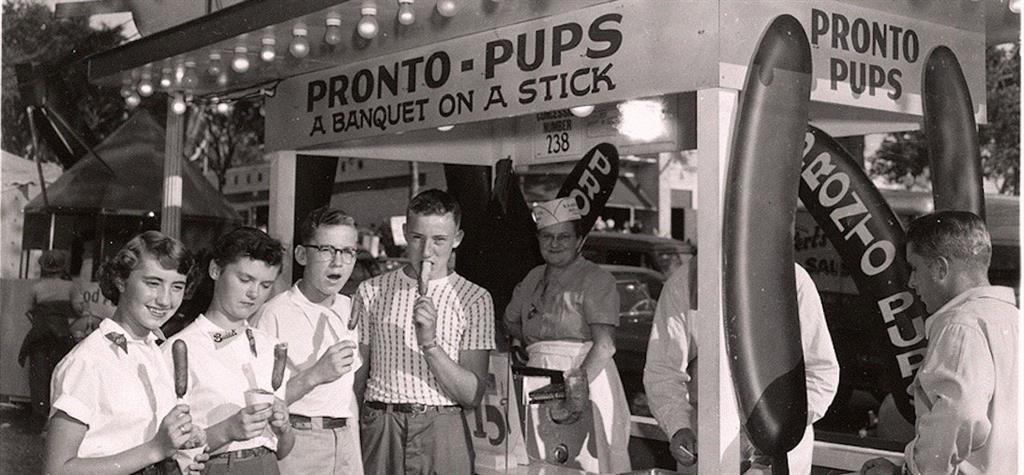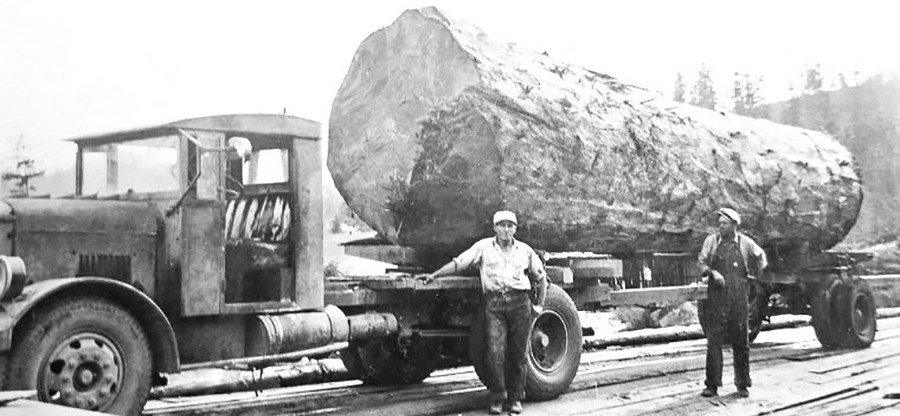 1939 Pontiac Ghost Car
1939 Pontiac Ghost Car
Posted on Tuesday, May 10, 2022
Categories:
History
Amandus D. Moyer began his heavy hauling business in 1930s which evolved into the founding of A.D. Moyer Lumber in 1939. The world was a much different place then with many obstacles to overcome. At the tail end of WWI and the Great Depression, men were struggling to put food on the table and keep a roof over their family's heads. From that rose great hope, greater determination, and a uniquely-American entrepreneurial spirit that would not be suppressed!
In 2019 we celebrated A.D. Moyer's 80th year in business and the fourth generation of Moyer family involved in the business. Let's reflect back on what else was going on in the world in 1939.
The average annual income was $1,368. The average cost of a new car was $750 while a new house averaged $4,000. A gallon of milk cost about 23 cents while a gallon of gas was down to 10 cents. Bread averaged nine cents per loaf.
Happening in the World in 1939:
- The New York World's Fair was held at Flushing Meadows–Corona Park in Queens, New York. It was the second most expensive American world's fair of all time, exceeded only by St. Louis's Louisiana Purchase Exposition of 1904
- Pontiac unveiled it's "Ghost Car" (pictured above) at the World's Fair. It was a Pontiac Deluxe Six covered in the see-through material Plexiglas. Built in 1939 by General Motors and chemical company Rohm and Haas (Philadelphia) at a cost of $25,000, it was the first transparent full-sized car to be made in America. The car later sold at auction for $308,000. (watch video at bottom of blog)
- Chrysler began production of the Desoto Custom
- Adolph Hitler called for the extermination of European Jews. Later in the year, Hitler ordered the extermination of the mentally ill
- President Franklin D. Roosevelt asked for (and received) a defense budget hike
- “The Wizard of Oz” and “Gone with the Wind” made giant slashes in the film world
- Albert Einstein alerted President FDR to an A-bomb opportunity, which led to the creation of the Manhattan Project. Einstein fled Nazi Germany in 1933
- New for readers was the daily comic strip “Superman” as well as Glamour magazine. John Steinbeck’s “The Grapes of Wrath” was also published
- Pan American Airways flew the first trans-Atlantic passenger service, from New York to Lisbon, Portugal
Famous People Born in 1939:
- Mike Ditka (Carnegie, Pennsylvania)
- Tina Turner (Nutbush, TN)
- Lee Majors (Wyandotte, Michigan)
- George Hamilton (Memphis, TN)
- Neil Sedaka (Brooklyn, NY)
- Marvin Gaye (Washington, D.C)
Happening in Sports in 1939:
- The Philadelphia Eagles season was the franchise's 7th season in the National Football League. The team failed to improve on their previous output of 5–6, winning only one game. The team failed to qualify for the playoffs for the seventh consecutive season. The October 22 game against Brooklyn was the first NFL game to be televised
- The Philadelphia Phillies finished eighth in the National League with a record of 45 wins and 106 losses
- The Philadelphia Athletics season involved the A's finishing seventh in the American League with a record of 55 wins and 97 losses.
- The Baseball Hall of Fame opened in Cooperstown, New York
- The New York Yankees swept the World Series in four games for the second straight year, winning their record fourth consecutive title (they would later win five straight from 1949 to 1953)
- The Green Bay Packers defeated the New York Giants 27-0 to win the National Football League Championship game
- Joe Louis retained the World Heavyweight title with a first-round knockout of world Light-Heavyweight champion John Henry Lewis in the first round, in New York City. It would be Lewis; last career fight, as it was later discovered that he had been fighting while suffering cataracts since 1936.
- Jesse Owens was the fastest man in the world, winning four gold medals in the 1936 Summer Olympics in Berlin, Germany including the 100m with a time of 10.3. Owens was credited with "single-handedly crushing Hitler's myth of Aryan supremacy"
 (Harry James band feat. Frank Sinatra)
(Harry James band feat. Frank Sinatra)
Happening in Music in 1939:
- Biggest Hit Songs:
- #1 - "Over the Rainbow" by Judy Garland
- #2 - "Moonlight Serenade" by Glenn Miller
- #3 - "God Bless America" by Kate Smith
- #4 - "Strange Fruit" by Billy Holiday
- #5 - "When the Saints Go Marching In" by Louis Armstrong
- Harry James forms his own band with 23-year-old Frank Sinatra as vocalist. Sinatra signed a one-year, $75 a week contract. James wanted to change Sinatra's name to 'Frankie Satin', but the singer refused.
- "You Are My Sunshine" was first recorded
- The Andrew Sisters record "Beer Barrel Polka"
- Billboard Magazine introduced the Hillbilly (aka country and western) music chart
Happening in Television in 1939:
-
RCA, General Electric, Dumont and others begin selling television sets to the public in the New York City area. Screen sizes typically range from 5 to 12 inches, and Dumont features 14-inch and 16-inch models. Prices start at $200 and go as high as $1000
- Franklin D. Roosevelt, appearing at the opening ceremony of the 1939 New York World's Fair, becomes the first President of the United States to give a speech that is broadcast by television
- The first baseball game (Princeton University vs. Columbia University) is broadcast by television, from Baker Field in New York
- The Walt Disney cartoon "Donald's Cousin Gus" airs on NBC's experimental station W2XBS (later WNBC-TV) in New York. This marks the first movie cartoon to be televised in the United States
- The first heavyweight boxing match is televised, ax Baer vs Lou Nova, from Yankee Stadium in the Bronx
- The first Major League Baseball game is telecast, a double-header between the Cincinnati Reds and the Brooklyn Dodgers at Ebbets Field, in Brooklyn, New York
- The first National Football League game is televised. The Brooklyn Dodgers vs. Philadelphia Eagles at Ebbets Field in Brooklyn

(the Corn Dog is born)
Happening in Food and Drink in 1939:
- President Franklin D. Roosevelt served hot dogs to King George VI and Queen Elizabeth of England during their 1939 visit to the United States. It was the first time they had tried this American gourmet treat
- Corn dog lore has it that George Boyington, a concessions vendor serving tourists in Rockaway, OR, hit a breaking point over Labor Day weekend in 1939 when the rain ruined his stock of hot dog buns. If only there was a way to cook buns on the spot, as they're needed. That spark of an idea grew, and thus, the corn dog was born
- The first U.S. patent was issued for a disposable whipped cream aerosol container
- The first Wheaties TV commercial (live) aired when host Red Barbar promoted it during a Brooklyn Dodgers game
- Rolling Rock beer was launched by the Latrobe Brewing Company
- Packaged beer (cans & bottles) outsold draught beer for the first time
- The college fad of swallowing Live Goldfish supposedly began on the campus of Harvard University
- U.S. agricultural exports were about $765 million a year during the 1930s (32% of total exports)
- The seedless watermelon was developed
Inventions in 1939:
- The first air-conditioned automobile was rolled out in Chicago. It was a Packard
- Nylon stockings made their debut in Wilmington, Delaware. Wallace Hume Carothers, the chemist who invented the synthetic material in 1935, worked for the DuPont company
- The yield sign or give way sign indicating that a vehicle driver must prepare to stop if necessary to let a driver on another approach proceed.
- A starting gate, also known as starting stalls, a machine used in the sports of thoroughbred horse and dog racing to ensure a fair start in a race
- A twist tie, a metal wire that is encased in a thin strip of paper or plastic and is used to tie the openings of bags, such as garbage bags or bread bags
- The Pink Daiquiri was invented in Cuba; also known as a Daiquiri No 5
- Armenian-American inventor Luther George Simjian initially came up with the idea of creating a hole-in-the-wall machine that would allow customers to make financial transactions. The idea was met with a great deal of skepticism after Citicorp tested it. In later years and after Simjian filed 20 patents related to the device, the idea and the gradual usage of ATM's became more widespread around the world. Automated Teller Machine (ATM)

Happening in the Timber Industry in 1939:
By the 1920s, a majority of the old-growth forests in Pennsylvania had been depleted, prompting the Commonwealth to purchase thousands of acres of land from lumber companies and begin to regulate and reforest the landscape. This gave birth to the modern conservation movement and continues to influence modern-day forestation practices in the industry.
President Franklin Delano Roosevelt called the 73rd Congress into session March 9, 1933, to work on his plan to pull America out of the Great Depression by putting people to work. The Emergency Conservation Work Act (ECW) - commonly known as the Civilian Conservation Corps (CCC) - was enacted quickly. The legislation put together two wasted resources: young men with no work, and land - also not working. Nearly three million people were eventually employed. So much of the work involved forests that the CCC workers came to be called "Roosevelt's Tree Army." By 1939 almost all districts were linked by radio, a tremendous advance in communications for forestry.
Pennsylvania CCC camps were set up primarily in state forests. Once the camps were established, projects were at a white heat from 1933 to 1939. In the last quarter of 1939, Pennsylvania led the nation in CCC activity with 6,462 young men enrolled. From 1933 to 1941, the CCC established about one hundred Pennsylvania camps and put more than 160,000 people to work.
The nine-year record of the CCC showed that the federal government and the states could work together effectively. A summary of the work done in Pennsylvania by the CCC states that hiring 160,000 Pennsylvanians for the CCC not only supported the workers, it supported almost half a million family members (based on an average of four family members per worker). The projects accomplished in Pennsylvania over the life of the program were the planting of 50 million trees; the building of more than 6,300 miles of roads and trails with numerous bridges, 98 small dams, 86 fire lookout towers; disease control on 450,000 acres (such as blister rust control); and more than 65,000 man-days spent fighting fire. Picnic areas and campsite facilities were built, miles of stream bank were stabilized, and in 1939 the first intensive inventory of tree growth on state lands was completed under the supervision of the Department of Forests and Waters with manpower from the CCC. Many of the projects built are still in place and still in use.
The months and years that followed the end of the war in August 1945 witnessed a great boom in logging and lumbering—new sawmills, a proliferation of gyppo operations, and a heady optimism in timber towns that the good times were here to stay.
[Sources: PA Department of Conservation and Natural Resources, The Oregon Encyclopedia, and Wikipedia]
Tagged:lumber, history, nostalgia